Smithsonian Student Travel | Slovenia & Croatia | NEW
Along the shores of the Adriatic Sea in southeastern Europe, explore ancient walled cities with cobbled streets, imposing fortresses, and iconic seaside beauty. Croatia and Slovenia boast a unique cultural mix of Central European, Mediterranean, and Slavic influence, especially evident in the architecture, cuisine, and folk traditions of these diverse countries. Begin the program in the vibrant Slovenian capital of Ljubljana, immersing yourself in architecture, food markets, and local specialties. Venture into the countryside to experience its natural beauty, from the shores of picturesque Lake Bled to scenic hikes in the Julian Alps. Descend into colossal cave systems and swim along dramatic coastlines dotted with rugged cliffs and hidden coves. Travel next to Croatia to continue your adventure. Explore an island by bicycle, camp, hike, and snorkel on the Adriatic coast; visit the walled city of Dubrovnik; and savor delicious meals overlooking the sea.
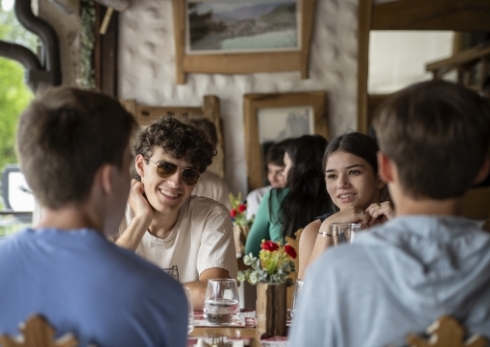
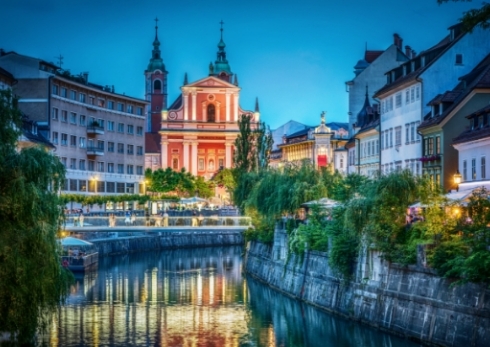
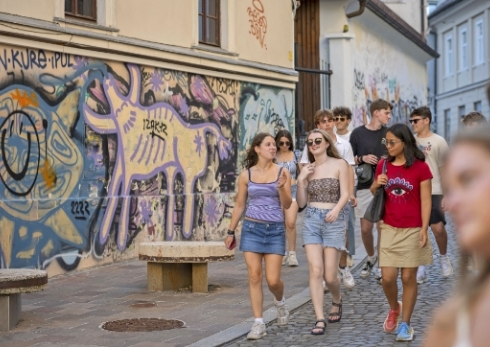
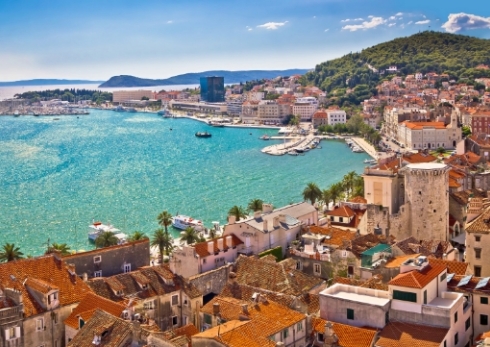
Highlights
-
Descend into Slovenia’s Škocjan Caves, a World Heritage site
-
Sample products during visits to local farms, from honey to olive oil
-
Explore the historic and tranquil island of Hvar by bicycle
-
Explore the Odprta kuhna, a one-of-a-kind food market in Ljubljana
-
Witness the Roman influence along the Dalmatian coast and explore Dubrovnik’s Old Town
Itinerary
This itinerary represents our plan for the program. However, we may implement changes if we identify opportunities to improve the experience, to take advantage of unexpected events, or to accommodate local schedule changes.
Departure • Travel Day • Meet your student travel group and one of your trip leaders in New York City, and fly together to Ljubljana, Slovenia.
Ljubljana, Slovenia • 3 days • Begin in Slovenia’s capital city, known for its historic city center, named a World Heritage site for its distinctive architecture, and lively culture along the River Ljubljanica. Explore the legacy of Jože Plečnik, who masterfully integrated a series of public spaces and institutions into the existing urban fabric, shaping the capital city as it is known today. Experience the vibrant Odprta kuhna, or “Open Kitchen” market, held every Friday from spring to fall and offering a lively mix of food, produce, and community spirit. Immerse yourself in the cultural festivities of the Ana Desetnica Festival, which transforms the city’s streets, squares, and parks into performance spaces. Venture to the Škocjan Caves, also a World Heritage site, renowned for their vast underground caverns and cathedral-like rock formations formed over millions of years, and learn about the rare olm, a unique cave-dwelling salamander. Visit Predjama Castle, which dates back to the 12th century, or marvel at the Divje Babe Flute, thought to be the world’s oldest musical instrument at 30,000 years old.
Bled, Slovenia • 2 days • Embark on a boating adventure in the serene waters of Lake Bled, followed by a hike around its picturesque shores. Discover the natural wonder of Vintgar Gorge with its stunning vistas. Then spend a day with a beekeeper to learn about Slovenia’s efforts to promote international awareness of bee conservation. Finally, visit the tranquil Lake Bohinj to complete your immersions in this region’s enchanting natural wonders.
Istria & Pula, Croatia • 3 days • Head to Pula, at the tip of the Istria peninsula in the Adriatic Sea. Explore the historic Pula Arena, some of the best-preserved Roman ruins outside of Italy. Take the ferry to Brijuni National Park for a day of exploration. Delve into the world of organic olive oil production at a family-run olive orchard, where you will learn about the region’s long-standing tradition of olive cultivation. At the Ecomuseum, engage with a local organization dedicated to preserving traditional agricultural and cooking techniques, and promoting the work of local growers and artisans.
Split & Hvar, Croatia • 4 days • Next, dive into adventure on the Adriatic coast with a local outfitter. Visit Diocletian’s Palace with a local historian and learn how this ancient marvel was built for the Roman emperor Diocletian at the end of the third century AD and now comprises about half of the old town. Ascend Marjan Hill for stunning views, then swim on one of the many beaches along the coast. Join locals in playing picigin, a traditional beach ballgame. Head to the Omiš River canyon for an exhilarating day of whitewater rafting and ziplining. Take a ferry to the Island of Hvar, cycle along scenic coastal paths, and hike and camp in the hills overlooking the sea.
Dubrovnik, Croatia • 3 days • As your adventure draws to a close, spend your final nights in the iconic seaside city of Dubrovnik. Witness a breathtaking sunset atop Mount Srd, where you can enjoy a panoramic view of the medieval town below. Stroll along the ancient fortification walls of the Old Town, marveling at the churches, palaces, cobbled streets, and marbled squares that lie beneath you. Enjoy a final celebratory dinner, share your personal projects, and reflect on your experiences before heading home.
Return • Travel Day • Fly from Dubrovnik, Croatia, to New York City with your group and a trip leader, then continue on to your final destination.
Smithsonian Student Travel Experts
A Smithsonian Student Travel Expert will join the group for four or five days of the itinerary. A professional in their field, they will tie in their knowledge and experiences with the themes of the program and share their insights and passion for the region during talks and informal conversations throughout their time with the students.
Experts for Summer 2025 coming soon!
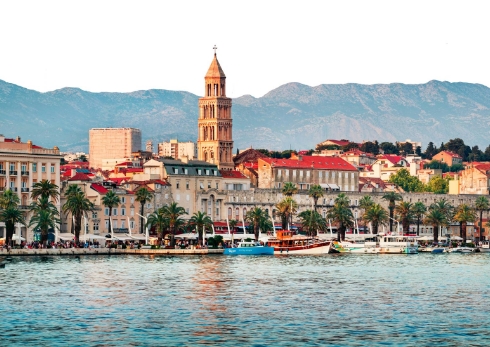
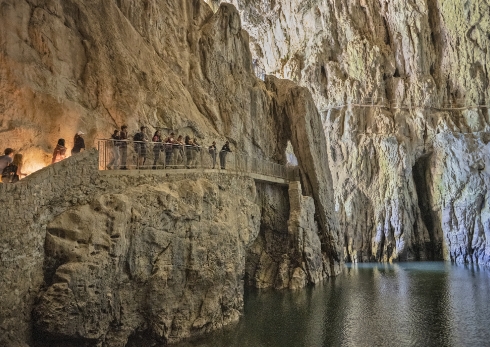

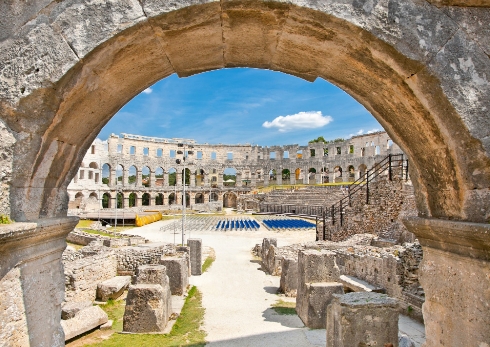
What to Expect
Physical Activity • This is a physically active summer travel program. You can expect to hike, cycle, whitewater raft, zipline, ocean swim, and snorkel over the course of the trip. You do not need to be at peak fitness to participate, but it is important that you have a desire to be physically active, and that you are excited about trying all activities.
Accommodations • We stay in various types of accommodations throughout this program, ranging from hostels, small hotels, and guesthouses to camping in tents. Students have access to common and outside space at our accommodations for community meetings, working on projects, and socializing. Rooms are separated by gender and are a mix of doubles, triples, and quads. While on the Dalmatian coast, we spend up to four nights camping. Our local outfitter provides tents and necessary camping gear. Leaders reside together with the students throughout the program.
Climate • We visit Croatia and Slovenia during the summer when the weather is generally hot and sunny. Average daytime temperatures range in the 70s, 80s and 90s °F (20–30°C), while nighttime temperatures are in the 50s, 60s, and 70s °F (10–20°C). While it can be hot on the coast, ocean breezes have a cooling effect.
Meals • We begin most days with breakfast at our accommodations and enjoy lunches and dinners at small, local restaurants and cafes, or picnic-style in parks and on waterfronts.
Cuisine • Olive oil is a staple of the Croatian diet and is used in the preparation of many dishes. While each region has its own culinary styles incorporating locally sourced meats, cheeses, breads, and produce, continental options such as pastas and pizzas are common. Fresh seafood is ubiquitous along the coast, where Italian influences are most notable. Custards and gelatos are popular desserts. Slovenian cuisine is a mix of Central European and Mediterranean influences. Dishes often feature ingredients such as pork, beef, potatoes, cabbage, mushrooms, and dairy products. Popular dishes include štruklji, jota, and potica.
Enroll in two programs & save $1,000!
$800 tuition discount + no second application fee
